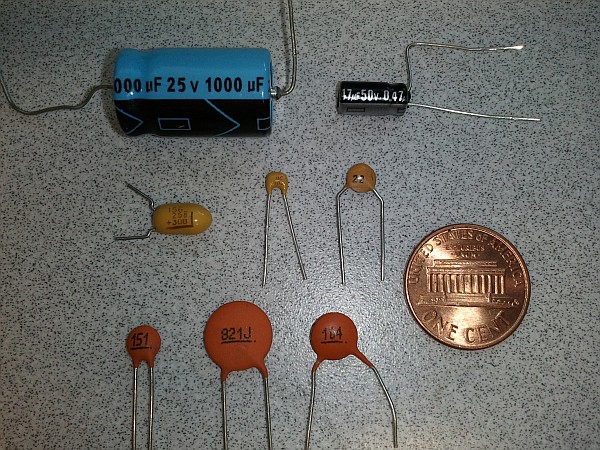Small capacitors can sometimes be difficult to read. On large electrolytic capacitors, manufacturers often provide lots of specs, including not only a clear value (10uF, 220uF, etc), but rated voltage and sometimes other information, as well.
On smaller capacitors, this information is often quite terse. Larger ceramic and tantalum capacitors may still have the value written out in full (1uF etc) — but on smaller capacitors, space is at a premium and manufacturers resort to numeric shorthand to show values.
Typically, this shorthand will be one of several kinds:
- Straight numeric value, with the unit assumed to be pF (picofarads);
- Numeric value in pF with an “R” standing for a decimal (“2R2”);
- Exponential format (described below).
The first two types are fairly straightforward — although the lack of standardization can lead to confusion.
As examples, the values of the capacitors in the above picture can be interpreted as follows (top to bottom, left to right:
- 1000uF electrolytic (= 1mF; value shown directly)
- 0.47uF electrolytic (value shown directly)
- 15uF tantalum (15 x 10^6 pF = 15,000 nF)
- 0.01uF tantalum (10 x 10^3 pF = 10 nF)
- 22pF ceramic (value in pF marked directly)
- 150pF ceramic (15 x 10^1 pF)
- 820pF ceramic (82 x 10^1 pF)
- 0.16uF ceramic (16 x 10^4 pF, or 160nF)
…of course, the most reliable way to tell for certain is to use a capacitance meter.


